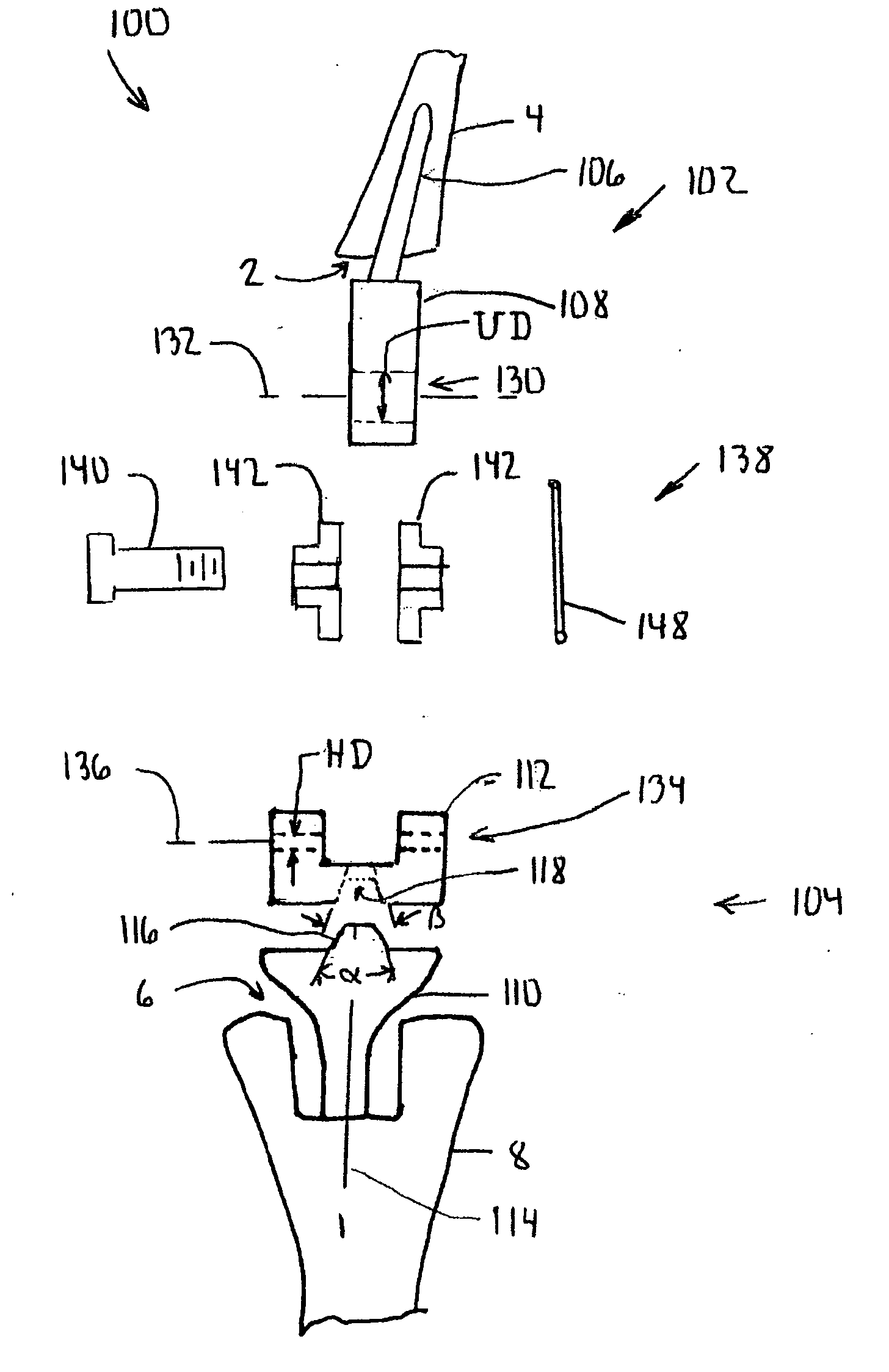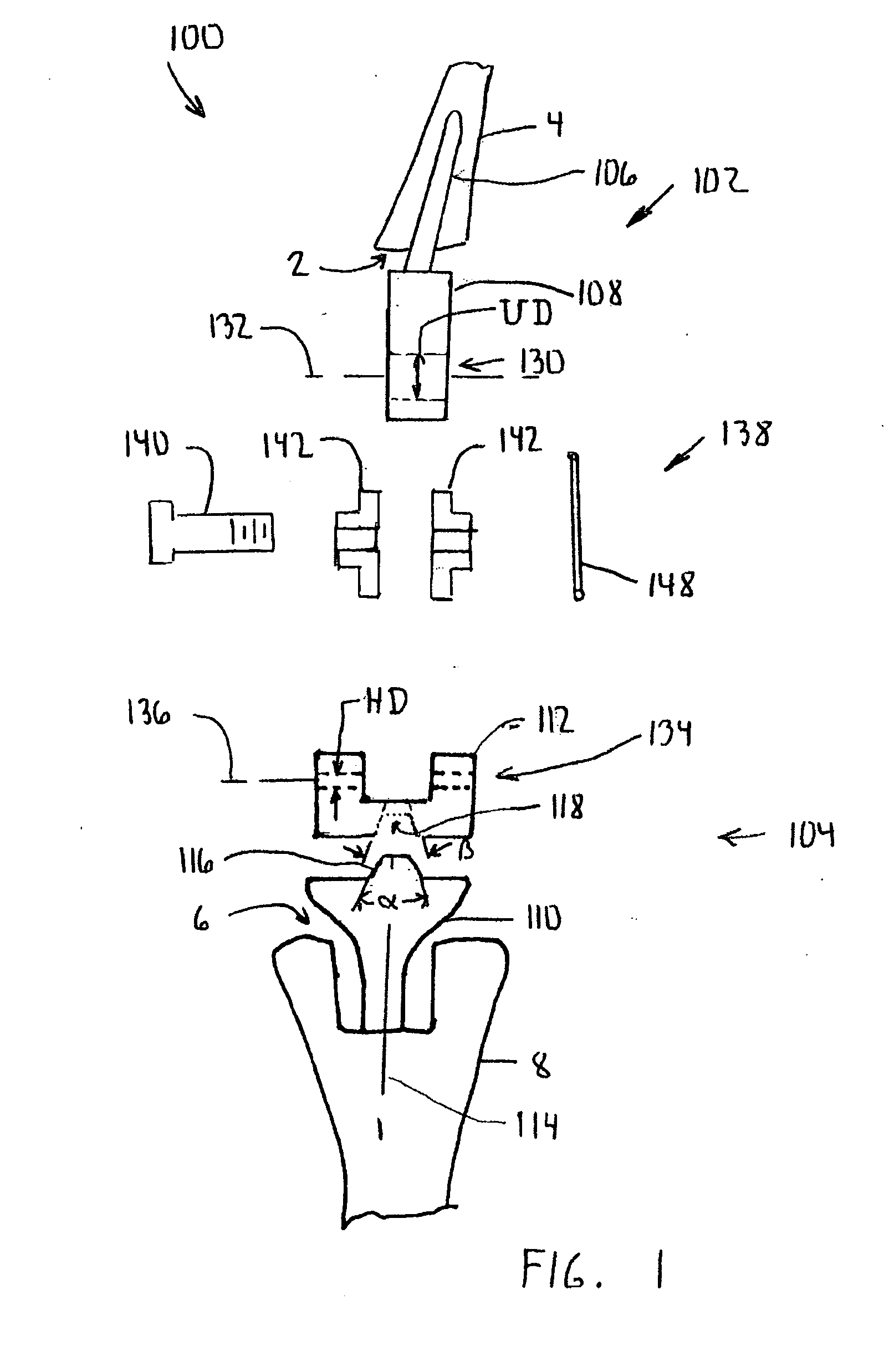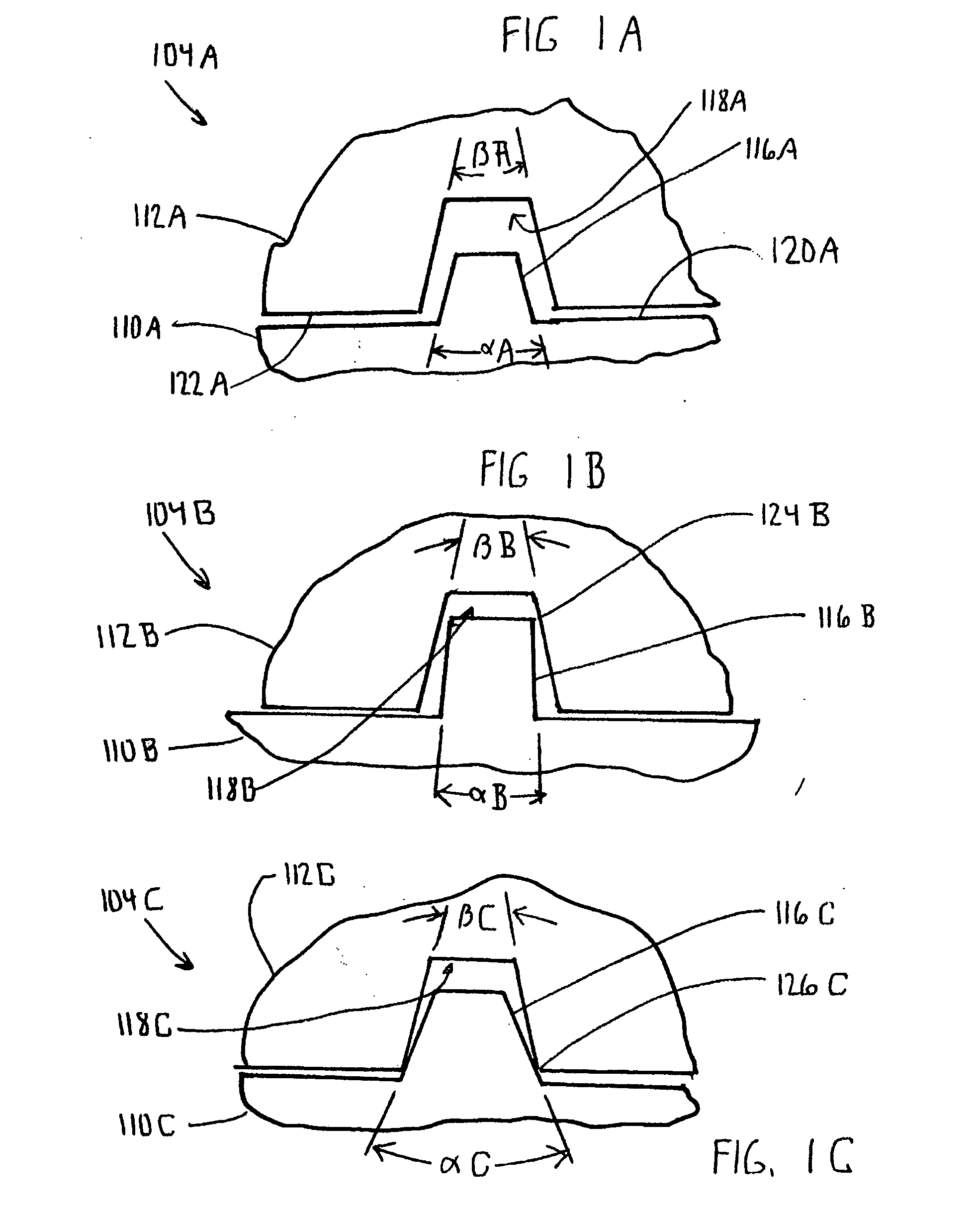Mobile bearing total elbow prosthesis, ulnar component, and associated kit
- Summary
- Abstract
- Description
- Claims
- Application Information
AI Technical Summary
Benefits of technology
Problems solved by technology
Method used
Image
Examples
Embodiment Construction
[0091] Embodiments of the present invention and the advantages thereof are best understood by referring to the following descriptions and drawings, wherein like numerals are used for like and corresponding parts of the drawings.
[0092] According to the present invention and referring now to FIG. 1, an embodiment of the present invention is shown as elbow prosthesis 100. The elbow prosthesis 100 includes an ulnar component 102 and a humeral component 104. The ulnar component 102 includes a first portion 106 of the ulnar component 102. The first portion 106 is implantable in a cavity 2 formed in the ulna 4. The ulnar component 102 also includes a second portion 108.
[0093] The humeral component 104 includes a first portion 110. The first portion 110 is implantable in a cavity 6 formed in the humerus 8. The humeral component 104 also includes a second portion 112 of the humeral component 104. The first portion 110 of the humeral component 104 defines a longitudinal axis 114 of the firs...
PUM
 Login to View More
Login to View More Abstract
Description
Claims
Application Information
 Login to View More
Login to View More - R&D
- Intellectual Property
- Life Sciences
- Materials
- Tech Scout
- Unparalleled Data Quality
- Higher Quality Content
- 60% Fewer Hallucinations
Browse by: Latest US Patents, China's latest patents, Technical Efficacy Thesaurus, Application Domain, Technology Topic, Popular Technical Reports.
© 2025 PatSnap. All rights reserved.Legal|Privacy policy|Modern Slavery Act Transparency Statement|Sitemap|About US| Contact US: help@patsnap.com



